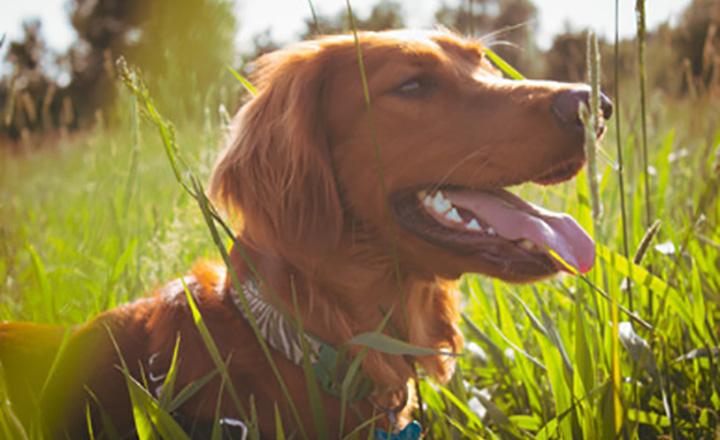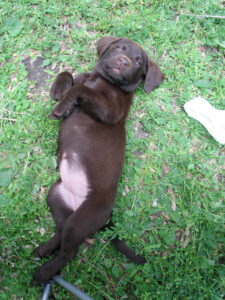
A Beginner’s Guide To The Dog Park
ALL YOU REALLY NEED TO KNOW ABOUT THE DOG PARK YOU LEARNED FROM NICO
 It was the perfect summer day. Nico was a fat little brown Labrador puppy and we wanted her to have everything a dog should have. “Let’s take her to the dog park!”, we thought. The problem was, she wasn’t a dog. She was a puppy.
It was the perfect summer day. Nico was a fat little brown Labrador puppy and we wanted her to have everything a dog should have. “Let’s take her to the dog park!”, we thought. The problem was, she wasn’t a dog. She was a puppy.
Although nothing terrible happened that day, Nico was trampled by a pack of playing adult dogs and later wandered into a culvert. She emerged after what felt like an hour all mucked up with slime and a happy look on her puppy face.
We didn’t go back for another 4 months.
What we didn’t know was that Nico was too young to be there. She didn’t have a good recall or even know her own name. We had no idea about dog body language. We didn’t understand the perplexed looks from other people at the park. Some people saw us and promptly turned around with their dogs and walked the other way.
I look back on that time of complete obliviousness with amusement and horror. I got the feeling that I was missing something, and my perfectionist nature wouldn’t let it go. Enter Dr. Ian Dunbar.
EVERYTHING IS YOUR FAULT
Turning responsibility on its head, I began my reformation and admitted that anytime Nico messed up it was actually my failing as a dog owner. With that knowledge in mind everything got a lot easier when we went back to the park.
Set your dog up for success by understanding that not every dog will enjoy the dog park. Some dogs are not suited for it and be willing to admit when it’s time to call it quits.
UNWRITTEN RULES: RANDOM RECOMMENDATIONS
All parks have signs posted dictating rules. Dog parks are no exception, but things get overlooked and it’s up to us to ensure a safe and fun environment for everyone. By no means is the following information exhaustive or even enforced, but based on my experience and dog’s reactions I recommend that visitors follow these simple rules:
- Keep moving. Pausing to tie a shoe or quickly chat with a friend happens, but you’ll find that dogs have short attention spans and get bored quickly. I’ve rounded corners to find a group of people socializing as their dogs are digging holes or pooping unnoticed. The dogs are sometimes so bored that they forget all their manners and come sprinting towards us wreaking havoc and causing disagreements that can quickly turn into fights.
- A dog park is no place for a young puppy. Depending on the puppy and how quickly they mature emotionally, they don’t belong at the dog park. Puppies are vulnerable. Puppies aren’t fully vaccinated. And many older dogs don’t really like puppies. You run the risk of injury or illness when you bring your newest family member. And no, keeping them on leash is not a good alternative. I’ve seen dogs running at top speeds and not notice a leash, only to clothesline themselves and injure the puppy. Just as you wouldn’t enlist a toddler in a full-contact sport, you should not bring a puppy to a high energy off-leash situation. When your puppy is around 6 months to a year, start thinking about bringing them to a small and fully fenced park, such as High Bridge Dog Park.
- Toys are best played with at home. Many dog parks ask that food not be present, but I argue that toys cause the most scuffles and fights. Small dog treats are quickly eaten and forgotten, but a squeaky toy isn’t going anywhere and causes constant potential for conflict. I’ve seen the vast majority of dog fights break out over a tennis ball than anything else. That being said, if you’re at a mostly empty park then play for a few moments until another dog arrives. The toy goes away and walking resumes.
- Children must proceed with caution. Many dogs are not socialized with kids and it shows! Jumping up, knocking them down, barking at or chasing them. Things quickly get out of hand and someone gets hurt, or worse. A dog park is not a children’s park, so give your kids guidance on how to behave. If they’re too young to follow instructions then they’re not ready for a dog park visit. Understand basic dog communication and you’ll understand that the game you thought was cute is actually putting your dog and child in danger.
- The entrance is the most dangerous place. Anywhere that dogs congregate creates chaos and friction. When leaving the park, I like to leash my dogs early so we can stand off to the side as others are entering. Standing right next to the gate amps up the excitement between dogs and is a surefire way to start conflict.
- Dogs belong on-leash in the parking lot. Your dog has graduated from every obedience class and you feel invincible. The dog park gate is only 50 feet away so why not unleash Fido early and let them run? Because, it’s not about you. It’s me. You know your own dog best and understand that they won’t do anything if they’re free in the parking lot. What about everyone else? Leash frustration is a real problem and by allowing your dog to break the rules, you’re making a normal situation into a nightmare. There’s so many variables out of your control in a parking lot that I don’t have room to list them all here. The bottom line is that you’re putting your dog and everyone else at risk when you prematurely unleash your dog.
For further reading and to get another opinion on dog parks, check out this helpful article about common dog park mistakes. See you and your dog at the park!